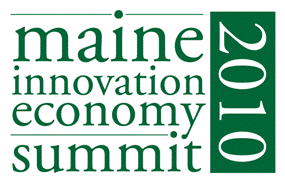 Aquaporin
says it will be able to turn salt water into drinking water with a
customized molecule that mimics the function of similar molecules found
inside liver cells.
Aquaporin
says it will be able to turn salt water into drinking water with a
customized molecule that mimics the function of similar molecules found
inside liver cells.
Yelp publishes restaurant and hotel reviews from unpaid contributors.
That pretty much underscores the differences between the green technology industry and the web. Every week, someone -- usually in a petulant voice -- asks me, "Where is the Google of green?" or "How come there is no Steve Jobs of green?"
My first reaction is, don't jinx it, people. The next thing you know, people will start obsequiously yammering about how their iShingle solar tile has fundamentally changed their outlook on roofing and building materials and life in general.




 The spirit of entrepreneurship was alive and well at last week's Presidential Summit on Entrepreneurship. The White House took a political risk in hosting a summit on "global" entrepreneurship in a climate when so many Americans, anxious about their local economy, are easily blinded to the vital role entrepreneurs play in building the stable economies overseas essential to our growing firms back home. The summit though was a foreign policy success and a solid statement of support for the role all entrepreneurs play in creating jobs and economic growth.
The spirit of entrepreneurship was alive and well at last week's Presidential Summit on Entrepreneurship. The White House took a political risk in hosting a summit on "global" entrepreneurship in a climate when so many Americans, anxious about their local economy, are easily blinded to the vital role entrepreneurs play in building the stable economies overseas essential to our growing firms back home. The summit though was a foreign policy success and a solid statement of support for the role all entrepreneurs play in creating jobs and economic growth.
 Size matters -- or does it?
Size matters -- or does it? It is common knowledge that sustainability is a big deal. It is a multidimensional issue that impacts all sectors of society. Companies wrestle with how they are going to respond beyond the obvious of energy conservation and waste reduction, when sustainability begins to blur with corporate social responsibility (CSR).
It is common knowledge that sustainability is a big deal. It is a multidimensional issue that impacts all sectors of society. Companies wrestle with how they are going to respond beyond the obvious of energy conservation and waste reduction, when sustainability begins to blur with corporate social responsibility (CSR).



 On Wednesday of this week,
On Wednesday of this week,  HARTFORD — The Rell administration and Democratic lawmakers have agreed on a comprehensive economic development bill with more than $250 million to help small businesses.
HARTFORD — The Rell administration and Democratic lawmakers have agreed on a comprehensive economic development bill with more than $250 million to help small businesses. Entrepreneur: Jeff Hammerbacher, 27
Entrepreneur: Jeff Hammerbacher, 27 The wings on angel investors may have been clipped during the recent recession. But they seem to be getting airborne again after a sluggish 2009.
The wings on angel investors may have been clipped during the recent recession. But they seem to be getting airborne again after a sluggish 2009.

